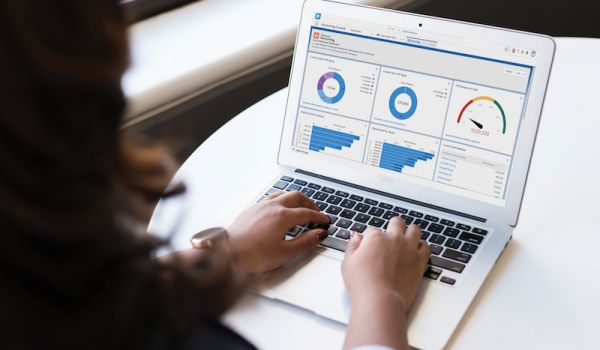
If your company or business is located in the UK, you might be wondering if you need bridging software to meet Making Tax Digital (MTD) compliance this tax year. First, let’s take a look at how MTD bridging software works and when it’s needed.
What is MTD Bridging Software?
MTD bridging software is an application that links business records to HMRC’s systems in an MTD-compatible manner. To make sure your bridging software is compliant, check out this list of compatible solutions provided by HMRC.
The government’s MTD initiative requires businesses to submit their value-added tax (VAT) returns digitally. Bookkeepers can no longer keep records via spreadsheets and manually enter these into the Government Gateway. This antiquated methodology is inefficient, time-consuming, and doesn’t meet the requirements set forth by MTD. In summary, MTD brings the tax system into the digital age. Additionally, it’s about saving businesses time, and in the long run – money.
When Do I Need MTD Bridging Software?
To clarify, not everyone needs bridging software. In fact, the only businesses that need bridging software are the ones that don’t have a link to HMRC. Similarly, they don’t have a compatible software package that allows them to keep digital records and submit VAT Returns. So, to avoid fines and fees, these businesses are required to use bridging software. This software connects their non-compatible software (like spreadsheets) to HMRC systems.
The businesses that choose to keep their records via spreadsheets and other methods require additional bridging software. They need this software in order to submit their VAT returns in a compliant manner.
Does Bridging Software Work?
In short, bridging software is designed to provide a link between data stored in spreadsheets and HMRC’s portal. This link allows the data to be submitted digitally, making the VAT return compatible with MTD.
On its own, however, bridging software does not fulfill the other requirements of MTD. For instance, digital record-keeping compliance and maintaining digital links between data aren’t met. Additionally, users must perform further calculations to convert their data into the format required by the bridging software.
Phase Two of MTD
Believe it or not, phase two of the UK’s MTD initiative for VAT will start on April 1, 2021. The start of phase two comes nearly a year after the ongoing COVID-19 extension set forth by HMRC. Avoid penalties by making sure your accounting software is MTD compliant.
Phase two of MTD requires digital recordkeeping and the tracking of digital journeys. There are penalties for infringement and late filings. You can learn more about the requirements for phase two and what software is compatible here.
MTD Phase 2 follows the April 2019 (Phase 1) requirements. These state that all UK VAT registered businesses over the registration threshold were required to file returns via a new API interface with HMRC.
Accounting Seed and Avalara
Accounting Seed users in the UK don’t need to worry about phase two of MTD. They don’t need bridging software because of our seamless connection to Avalara. Avalara’s MTD Cloud and VAT Reporting software solutions are MTD recognized by HMRC.
Avalara serves tens of thousands of businesses globally. They process over two billion sales and use tax transactions annually. They allow users to validate shipping and billing addresses and also automate sales tax calculation inside of Accounting Seed.
Most importantly, Accounting Seed provides an all-in-one solution for maintaining and submitting MTD-recognized business accounts. Our connection to Avalara VAT Reporting gives you total control of your VAT reporting requirements. Accounting Seed supports the calculation and recording of VAT. Avalara VAT Reporting lets you transmit data to Avalara for the creation of a VAT return. These can then be digitally transmitted to your tax authorities instantly.
Conclusion
For MTD, bridging software is a tool or application designed to be the digital link between your business and HMRC. You need to report your taxes digitally, as the legislation demands.
Notably, a bridging tool doesn’t meet the other requirements for MTD, such as digital record keeping. And, it doesn’t totally ensure your systems are digitally linked.
This is why you shouldn’t use bridging tools other than as a very temporary stopgap measure. Secondly, they mustn’t be seen as a permanent solution by any means. Above all, if your company is looking for bridging software this tax season, take the next step and get a cloud accounting solution that fills all the requirements of MTD.
Accounting Seed, through our connection with Avalara, complies with MTD and provides a full 360-degree view of your business’ performance to help you and your accounting team make the best decisions possible.
See Accounting Seed in action
Get a close-up view of how accounting on Salesforce can eliminate the need for costly integrations—and silos of mismatched information—by sharing the same database as your CRM.



